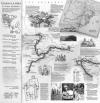Abstract
In order to protect and adequately appreciate the different elements and heritage values available in the territory, themanaging entities of these goods use different mechanisms depending on the characteristics of the elements andgroups, as well as on the capabilities of their own agencies. A reading and classification of the diversity of methodologiesand strategies, using the case study of the Spanish environment, may provide a series of guidelines on whichcan be a model fit for a particular patrimonial element, as well as on which strategies can be the best to revalue itsattributes, while optimizing the transfer of knowledge to its visitors.Apuntes is registered under a Creative Commons Attribution 4.0 International Public License. Thus, this work may be reproduced, distributed, and publicly shared in digital format, as long as the names of the authors and Pontificia Universidad Javeriana are acknowledged. Others are allowed to quote, adapt, transform, auto-archive, republish, and create based on this material, for any purpose (even commercial ones), provided the authorship is duly acknowledged, a link to the original work is provided, and it is specified if changes have been made. Pontificia Universidad Javeriana does not hold the rights of published works and the authors are solely responsible for the contents of their works; they keep the moral, intellectual, privacy, and publicity rights.
Approving the intervention of the work (review, copy-editing, translation, layout) and the following outreach, are granted through an use license and not through an assignment of rights. This means the journal and Pontificia Universidad Javeriana cannot be held responsible for any ethical malpractice by the authors. As a consequence of the protection granted by the use license, the journal is not required to publish recantations or modify information already published, unless the errata stems from the editorial management process. Publishing contents in this journal does not generate royalties for contributors.

